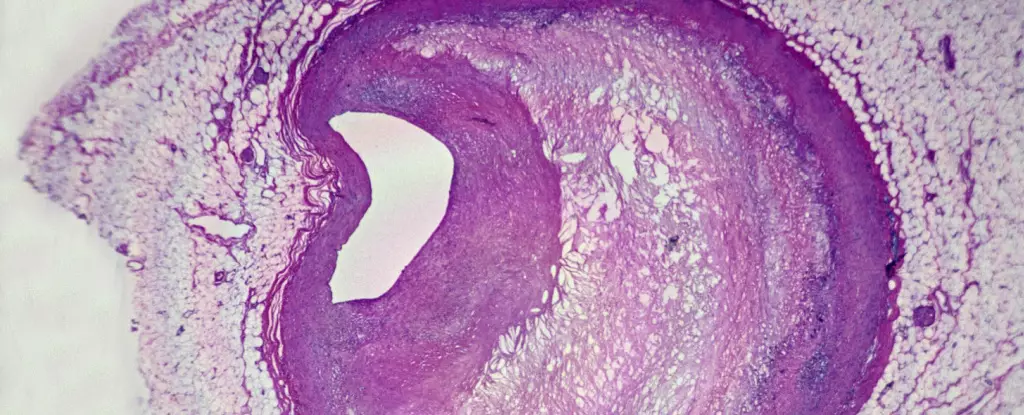In the contemporary world, plastics have infiltrated every aspect of our lives, from the packaging of food to the materials used in construction. These synthetic materials, particularly microplastics, have raised alarm bells among researchers, especially after findings revealed their presence in human organs, including the placenta. This infiltration highlights an urgent need to investigate the implications for human health as tiny plastic particles become more prevalent within our bodies. The prevalent question now is: what risks do these minuscule invaders pose to health at both an individual and population level?
In the pursuit of understanding the impact of microplastics, researchers have utilized miniaturized organ replicas and animal models, including mice, to investigate how these particles interact with biological systems. Yet, a shadow looms over these studies; the concentrations of microplastics used are often much higher than what individuals are typically exposed to in daily life. Consequently, translating results from such controlled environments to real-world human health outcomes remains a significant challenge. The gap in research becomes even more stark when we consider the limited studies conducted on human subjects.
A noteworthy study in Italy conducted by a team led by researcher Raffaele Marfella provides essential insights into this issue. It found microplastic fragments in adipose tissue samples obtained from patients undergoing carotid endarterectomy—a critical medical procedure meant to reduce the risk of stroke by clearing clogged arteries. The study tracked 257 patients over the course of nearly three years to explore potential correlations between microplastics found in their arterial plaques and adverse health outcomes.
The findings of Marfella’s study were striking. They discovered that nearly 60% of the patients harbored polyethylene—commonly found in plastic bags and bottles—embedded within their arterial plaques, while 12% possessed polyvinyl chloride (PVC), a versatile plastic used in countless applications from packaging to piping. The implications of such discoveries are profound, as these products are ubiquitous in the environment, leading to worrying questions about exposure routes and long-term health effects.
Microplastics were previously identified in human bloodstreams, leading to concerns about their potential association with heart-related conditions. Laboratory investigations support this unease, demonstrating how microplastics can incite inflammatory responses and oxidative stress within cardiac cells, potentially impairing heart function and leading to detrimental cardiac outcomes in animal studies.
The implications of Marfella’s research are striking—those patients with microplastics in their plaques exhibited over 4.5 times the likelihood of experiencing a stroke, non-fatal heart attack, or dying from any cause within the study’s follow-up period compared to those without detectable plastics. Researchers employed advanced methods to assess microplastic concentrations, including techniques such as pyrolysis-gas chromatography-mass spectrometry, alongside stable isotopes analysis to differentiate between human-derived carbon and petrochemical-based plastics. The study’s visual findings were equally compelling, revealing plastic particles within macrophages—a type of immune cell—indicative of the body’s attempt to respond to foreign materials.
Furthermore, the presence of inflammatory markers in patients with microplastics suggests a link that warrants deeper investigation, although it’s important to navigate these findings with caution. Observational studies, while crucial for generating hypotheses, cannot establish causation. The absence of consideration for additional cardiovascular risk factors, such as lifestyle habits or environmental influences, further complicates the discourse.
Critically, the challenges posed by widespread plastic pollution necessitate immediate and concerted efforts to understand and mitigate exposure risks. As Philip J. Landrigan, a noted pediatrician and public health expert, emphasized, this significant breakthrough in discovering microplastics within human tissues opens a Pandora’s box of urgent questions about preventative strategies and the broader environmental context.
In an era where plastic production continues to soar, contributing scant volumes to recycling initiatives, society must grapple with the intersection of public health and plastic pollution. While some regions experience declines in cardiovascular disease rates, the rise in plastic exposure demands rigorous investigation to ascertain links between these two trends.
Understanding the full ramifications of microplastics in human health will require collaborative efforts across scientific disciplines to raise awareness and inform policy. The findings serve as a starting point in a wider conversation about environmental sustainability, public health, and the profound implications of our plastic-laden world.


Leave a Reply